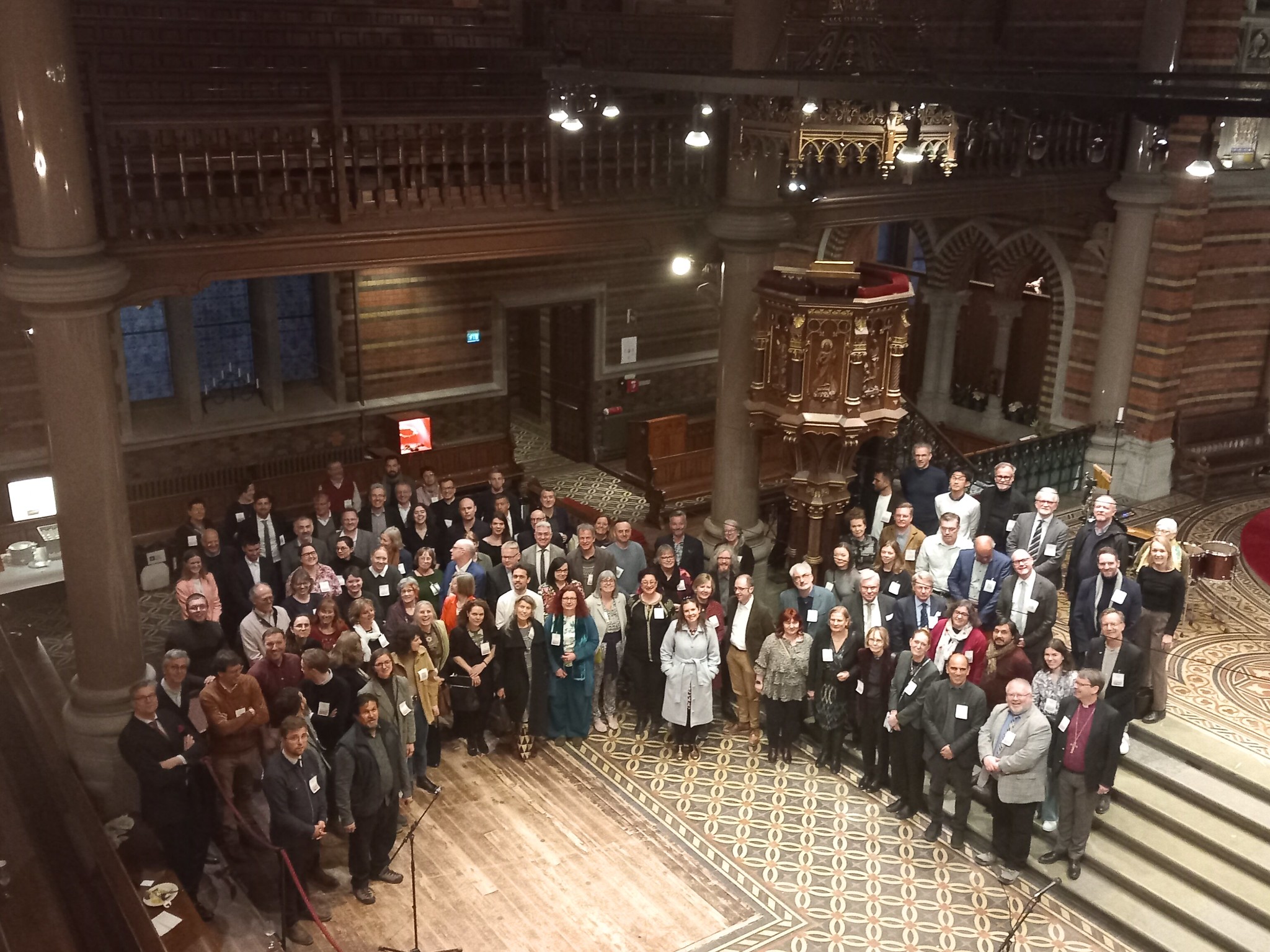
FRH was extremely pleased to host 114 attendees from 20 countries from Europe and beyond at a fantastic Biennial Conference that proved to be very stimulating for the debate on the future and sustainability of religious heritage.
During 20 and 21 April, we were nurtured by highly qualified professionals and academics on the economic, ecological, social and cultural challenges of buildings, museums and places of worship, which sparked interesting discussions and exchanges.
All the resources of the conference are now available on our website:
Inauguration
The conference kicked off on 21 April at the conference hall of the Kulturen in Lund Museum with the opening speeches of Mr Niclas Blåder, Very Rev Dean of the Cathedral of Lund; Henrik Lindblad, chair of the FRH Scientific Advisory Committee; and Lilian Grootswagers, president of the FRH Advisory Board. The inauguration was marked by the stunning performance of Sámi singer Elin Teilus, who delighted the audience with several songs about the Sámi people from North Sampi and their roots.
First day
Christer Gustafsson opened the session dedicated to the Sub-theme “Economic Sustainability” with a keynote speech that revolved around the adaptive reuse of heritage as a key strategy to achieve sustainability. The sub-theme also included the presentations of Claire Walker who shared key concepts and best practices to ensure the economic stability of religious heritage organisations, Peter Palgut and David Raška, who presented the model of the Gotcika Cesta Association as an example of sustainable management and commitment to local communities, and Ruth Dowson who introduced our audience to the concept of “Eventization”. Kareyna Zorya‘s presentation touched on the sensitive issue of heritage destruction in Ukraine through the presentation of the project “Religion on Fire”.
The second sub-theme kicked off with Shaul Bassi’s keynote speech on the dramatic effects of climate change using the example of Venice, Italy. The sub-theme also featured the presentations of Silvia Aulet and Jennie Hawks who highlighted several examples of initiatives that use religious heritage as a catalyst for climate action in rural areas, Bogdan-Ilie Cocieru who talked about the actions implemented in the Bukovina region (Romania) to support sustainable tourism, Helene Båtshake and Kristina Nilsson who analysed the potential of cemeteries as a place for knowledge, integration and democracy and Christos Kakalis and Neil Buford who brought the ecological model of monastic settlements in Scotland and Australia into the current scenario.
Our audience also had the opportunity to embark on a visual tour of the world’s religious heritage through the lens of the finalists of the FRH Photo Competition 2022 and André Boto, who received recognition as the winner of the competition from competition judges Lilian Grootswagers and Savina Lambert.
The afternoon sessions concluded with Samidha Pusalkar’s presentation on the need for youth engagement in the cultural heritage field.
The day ended on a high note, with a conference dinner at the spectacular 19th-century church of All Saints, where our conference attendees were welcomed by Heikki Ranta, Heritage Officer of the Diocese of Lund, and Anna Davidsson Bremborg, vicar of the parish. Before dinner we enjoyed a demonstration of organ music and another performance by Elin Teilus, followed by closing remarks by Johan Tyrberg, Bishop of the Diocese of Lund.
Second day
The second day of the conference started in the 12th-century Cathedral of Lund. After touring the building, we went back to the Kulturen in Lund Museum to begin with the next sub-theme of the conference: Social Sustainability. Tharik Hussain opened this sub-theme by providing an insight into the rich and often overlooked Muslim heritage in Europe. The morning session also featured the presentations of Tom O’Dell and Lee Dallas on the “Life in the Church” project, Olimpia Niglio on the “hidden” Christian sites in southern Japan, Anne Grady on the European Union report “Strengthening Cultural Heritage Resilience for Climate Change”, and Rolando Volzone on the use of the monastic heritage in Alentejo region (South of Portugal) as a driver for sustainable development.
To address the last sub-theme of the conference, Cultural/Spiritual Sustainability, our keynote speaker, Jakub Nowakowski, presented the challenges for museums and the different approaches to preserving the memory and meaning of place. This sub-theme also featured the presentations of Britta Roos on action plans of public administrations to protect cultural heritage in scenarios of conflict or threat, Klas Grinell on the soteriology of heritage, Matthias Ripp on the sustainability and resilience of heritage, and Caterina Ruscio on the case study of balance between religious function and tourism at the necropolis of Saint Peter in the Vatican.
Before reaching the end, the awards ceremony of the first edition of the Religious Heritage Innovator of the Year Award took place, with some of the awarded orgnisations on stage: School Church (finalist), Ambulance for Monuments (finalist) and Orgelkids (winner).
The last session of the conference was devoted to the conclusions and summary of all the contributions made by both the audience and the speakers over the course of the two-day event.
Study visits
An enriching day of study visits in Malmo followed the conference on 22 April. The first stop was Malmo’s Eastern Cemetery designed by renowned Swedish architect Sigurd Lewerentz. Divided into two groups, conference participants walked into the chapels of St Knuts and St Gertrudis and heard about the management of multireligious cemeteries in Sweden.
The second and last stop of the morning took place at the Trinity Church in Malmo, where Adam Ekberg, heritage specialist of the Church of Sweden, Adam Ekberg, heritage specialist at the Church of Sweden, gave us some background on Sweden’s “dark” heritage. For decades, the church has been home to a controversial altarpiece that has been labelled anti-Semitic and racist.





Follow us: